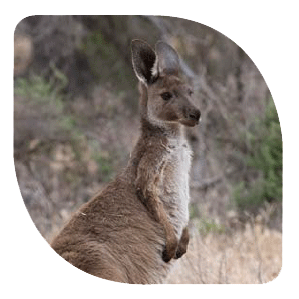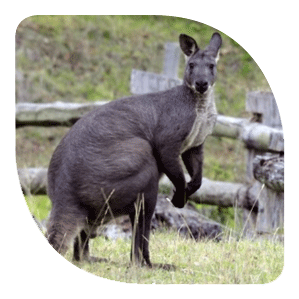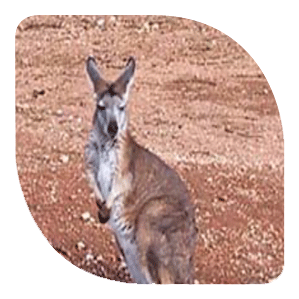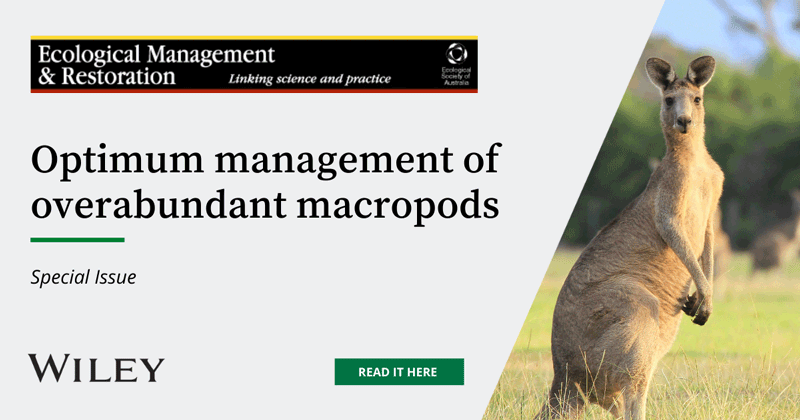Main Content
Kangaroo
Management Taskforce
Working together for healthy sustainable landscapes & kangaroos
Why kangaroos need to be managed
Kangaroos are one of the most abundant wild mammals in the world and the harvestable macropod species are some of the few Australian native animals that have thrived since European settlement.
After more than 40 years of kangaroo harvesting in Australia, populations of the harvestable kangaroo species are still abundant. Seasonal conditions are the main predictor of kangaroo populations, not harvesting. Kangaroo numbers increase significantly in good seasons and decrease dramatically in extended periods of drought.
In NSW kangaroo populations peaked in 2016 at 17.4 million, trebling from 5.5 million in 2005 and then declining again to 12.8 million in 2018 due to widespread drought. The boom/bust population cycle is a natural process but population peaks have increased since European settlement due to the proliferation of artificial water points and removal of predation through control of wild dogs and a reduction in Aboriginal hunting.
Large increases in kangaroo populations, or irruptions, have significant implications for both natural resource management and sustainable agriculture, while the starvation of millions of kangaroos during drought is an untenable animal welfare outcome for our beloved national icon.
Australia has around 50 species of marsupial mammals of the Super-family Macropodoidea but all references to kangaroos on this website refer to the following 5 species unless otherwise specified.
More on Kangaroo Management
Red Kangaroo

(Osphranter rufus)
The red kangaroo is the largest living marsupial. Males continue to grow throughout their lives, reaching up to two metres in height and weighing as much as 80-90 kg. Female reds (or “blue fliers”) are a smoky blue-grey in colour with a pale under-surface and red/brown tinges around their paws. They can grow up to 40 kg but are more commonly 23-30 kg. Red kangaroos have a top speed of more than 60 km/h and can leap eight metres far and three metres high.
Western Grey

(Macropus fuliginosus)
Western grey kangaroos are slightly smaller and lighter than eastern greys with males reaching about 50 kg. They are dusty to chocolate brown in colour (often with a black patch around the elbow and dark brown face) Although eastern and western grey kangaroos are closely related, interbreeding in the wild is rare.
Eastern Grey

(Macropus giganteus)
Eastern grey kangaroos are grey-brown in colour with a pale grey face and dark shading around the eyes. Eastern grey males grow to 1.5 – 1.8 metres in height and may exceed 70 kg while the females rarely reach 35 kg. Eastern greys can hop as well as the big reds: up to nine metres in one bound, and reach speeds of nearly 50 km/h.
Common Wallaroo

(Osphranter robustus)
Eastern Wallaroos have a robust build and inhabit the well-watered rocky hill country of the Great Dividing Range. In NSW wallaroos can be only be harvested in the Armidale, Upper Hunter and Glen Innes commercial harvest zones.
Euro

(Osphranter robustus infrasp erubescens)
The Euro is the arid-zone sub-species of the most widespread kangaroo, the Common Wallaroo. The Euro is the smallest of the commercial kangaroo species, male Euros rarely exceed 50kgs and females 25kg. Euros are typically more sedentary and more solitary than Red Kangaroos.

The Kangaroo Management Taskforce is funded by Local Land Services and works in partnership with all relevant agencies, stakeholders and industry.
The Kangaroo Management Taskforce recognises that we work and live on Aboriginal land and pay our respect to Elders past, present and emerging. We extend our respect to all First Nations peoples and acknowledge the strength, resilience and survival of all First Nations peoples throughout our history. Australia was, and always will be, Aboriginal land.

